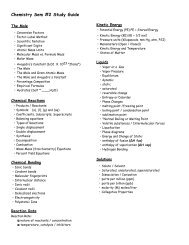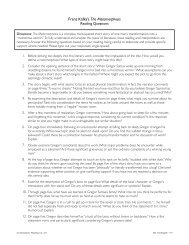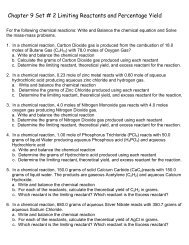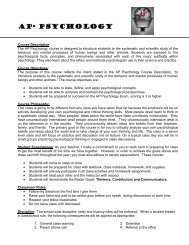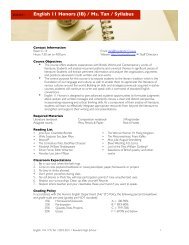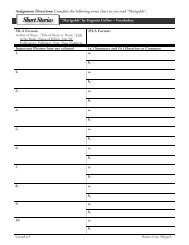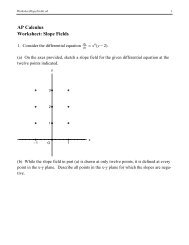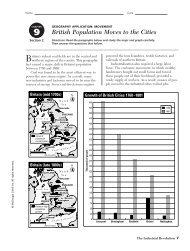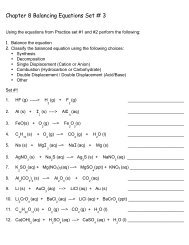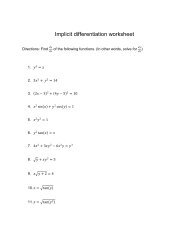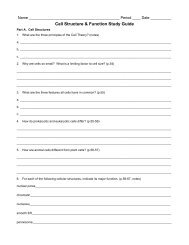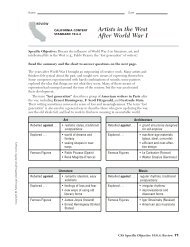APGeneticsLab
APGeneticsLab
APGeneticsLab
You also want an ePaper? Increase the reach of your titles
YUMPU automatically turns print PDFs into web optimized ePapers that Google loves.
Part B. Fruit Fly Crosses<br />
Procedure 1: Monohybrid Cross<br />
1. Go to the website: http://www.sciencecourseware.com/vcise/drosophila/ and log in as a guest.<br />
2. “Order” a pair of flies: a male wild type for wing size and a female with vestigial wing size. Put them<br />
in your “Shopping Cart”. Check out.<br />
3. Breed the flies, click on the “Mating Jar” and record the Data in Table 7.5.<br />
Table 7.5-F1 Generation<br />
Phenotype and Symbol Females Males<br />
4. Add one female and one male from the F 1 Generation and put them into a new mating jar. Breed<br />
them and record the F 2 generation data in Table 7.6<br />
Table 7.6-F2 Generation<br />
Phenotype and Symbol Females Males<br />
5. Write a hypothesis that describes the mode of inheritance of the trait you studied. This is your null<br />
hypothesis.<br />
6. Construct Punnett squares to predict the expected results of both parental and F 1 generational<br />
crosses from your null hypothesis.<br />
Parental Cross<br />
F1 Cross<br />
7. Refer to the Punnett squares above. In the table below, record the expected ratios for the genotypes<br />
and phenotypes of the F 1 and F 2 crosses in the experiment.<br />
F1 generation<br />
F2 generation<br />
Expected Genotypic Ratio<br />
Expected Phenotypic Ratio<br />
8. From the results, describe your cross.<br />
Is the mutation sex-linked or autosomal<br />
Is the mutation dominant or recessive<br />
Is the cross monohybrid of dihybrid<br />
_________________<br />
_________________<br />
_________________



